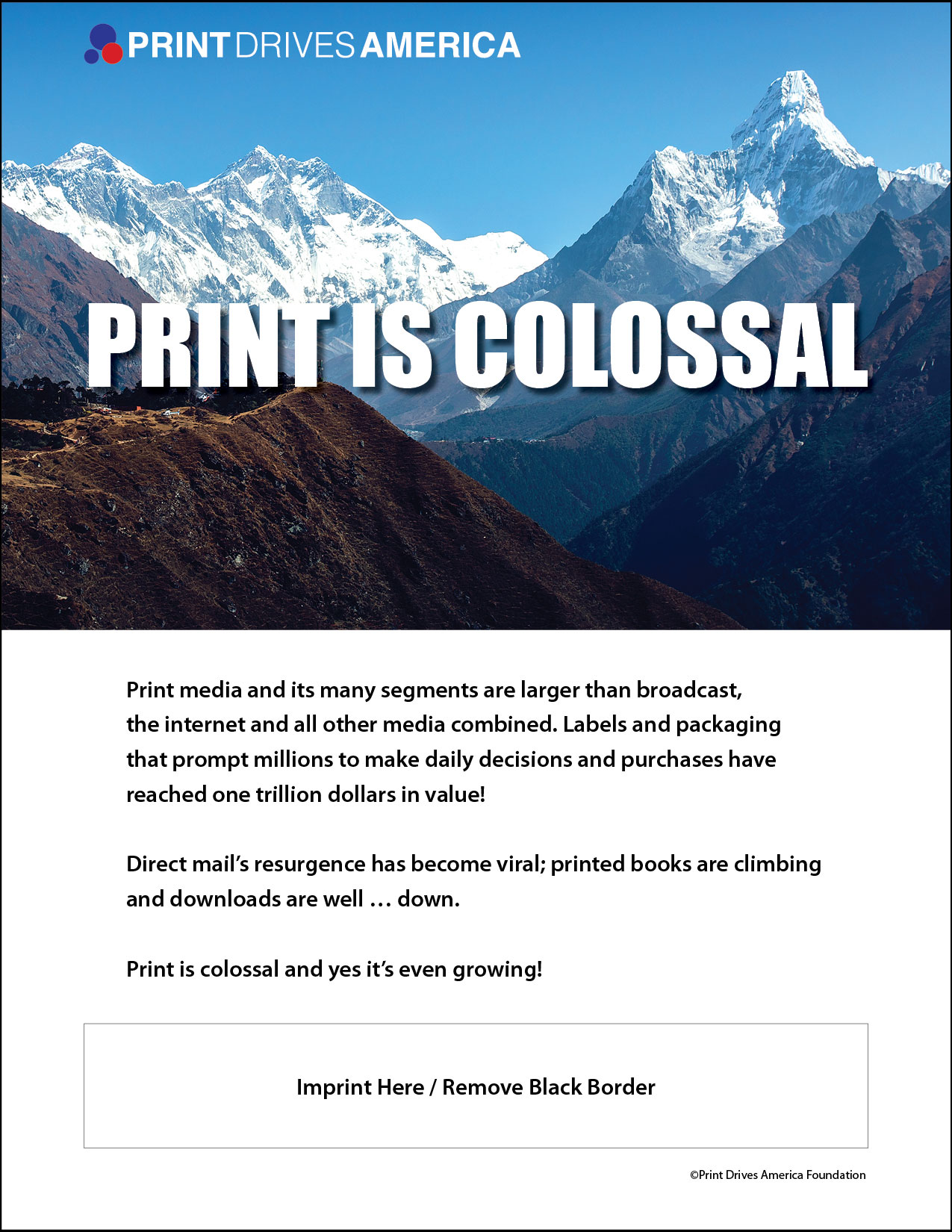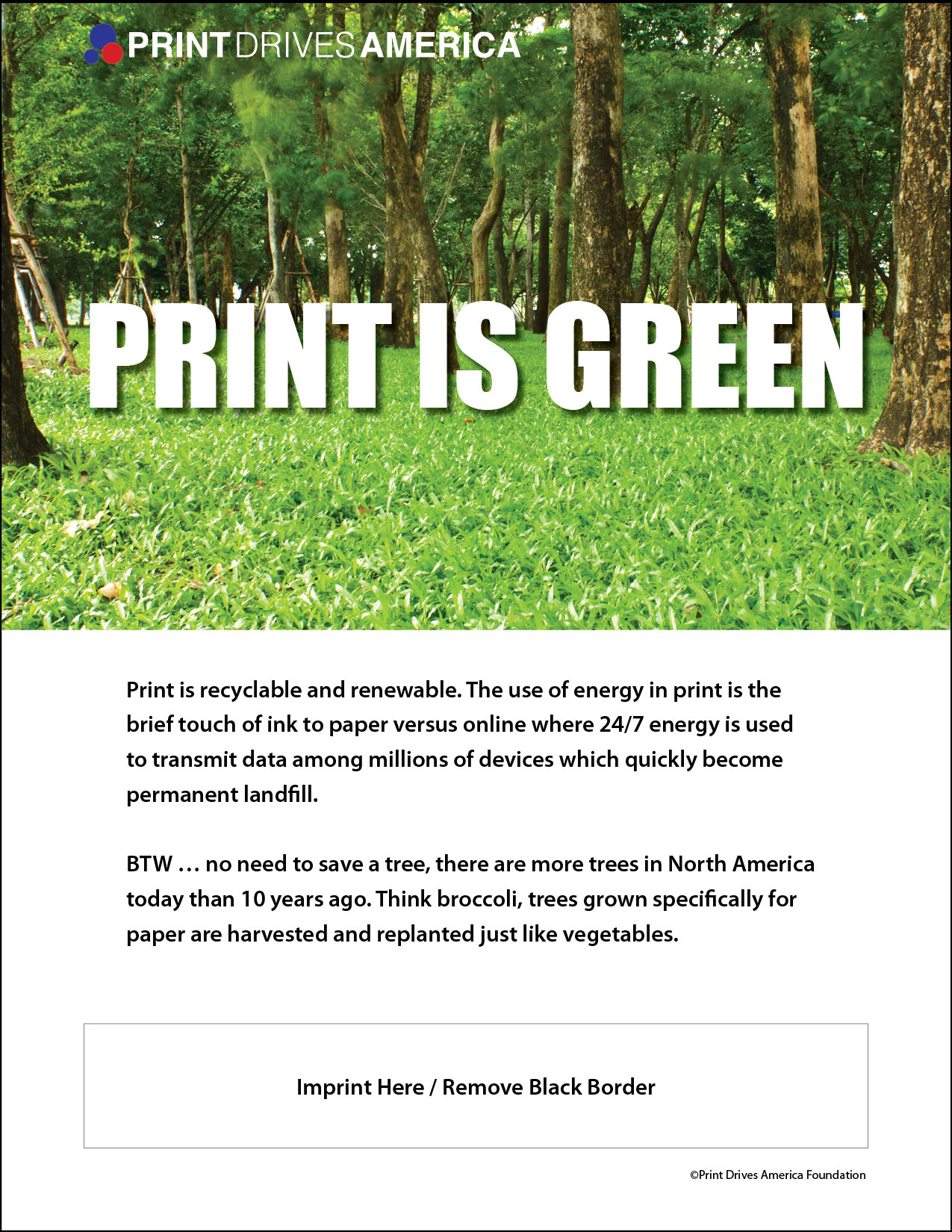To create paper you need trees. In the United States the trees used to generate paper come from well-managed tree farms. Furthermore, the amount of trees in the U.S. has actually grown since 1970 by 20 percent. The owners of the tree farms have a lot to do with this increase; on an average day tree farmers plant four million trees – or in other words between three and four trees are planted for every tree harvested for the production of paper. (Source)
Not only are more trees planted than harvested, but approximately 60 percent of the energy used to produce paper comes from recycled material – compared to the 10 percent most industries in America use. Just as in any industry, if demand for a product decreases production decreases. If the demand for paper decreases tree harvesters will be forced to either grow a different crop – which would destroy their forest – or sell the land to developers.
Digital has its environmental impact too. The CO2 emissions from making a CD are higher than printing a four color, 100 page annual report. In 2008, Americans produced 3.16 millions tons of electronic waste. Furthermore, trees are not used only to make paper. In fact, only 11 percent of the trees harvested in North America are used for the production of paper.
Both print and digital will have their environmental impact on our earth. It is important to understand how our actions effect the environment and by doing so, take proper measures to reduce or eliminate a negative environmental footprint. The print and paper industry continue to find new ways to be environmentally friendly to ensure a happy and healthy earth for years to come.
To create paper you need trees. In the United States the trees used to generate paper come from well-managed tree farms. Furthermore, the amount of trees in the U.S. has actually grown since 1970 by 20 percent. The owners of the tree farms have a lot to do with this increase; on an average day tree farmers plant four million trees – or in other words between three and four trees are planted for every tree harvested for the production of paper. (Source)
Not only are more trees planted than harvested, but approximately 60 percent of the energy used to produce paper comes from recycled material – compared to the 10 percent most industries in America use. Just as in any industry, if demand for a product decreases production decreases. If the demand for paper decreases tree harvesters will be forced to either grow a different crop – which would destroy their forest – or sell the land to developers.
Digital has its environmental impact too. The CO2 emissions from making a CD are higher than printing a four color, 100 page annual report. In 2008, Americans produced 3.16 millions tons of electronic waste. Furthermore, trees are not used only to make paper. In fact, only 11 percent of the trees harvested in North America are used for the production of paper.
Both print and digital will have their environmental impact on our earth. It is important to understand how our actions effect the environment and by doing so, take proper measures to reduce or eliminate a negative environmental footprint. The print and paper industry continue to find new ways to be environmentally friendly to ensure a happy and healthy earth for years to come.
Check back tomorrow for Print, Paper & Our Environment, Part II.




